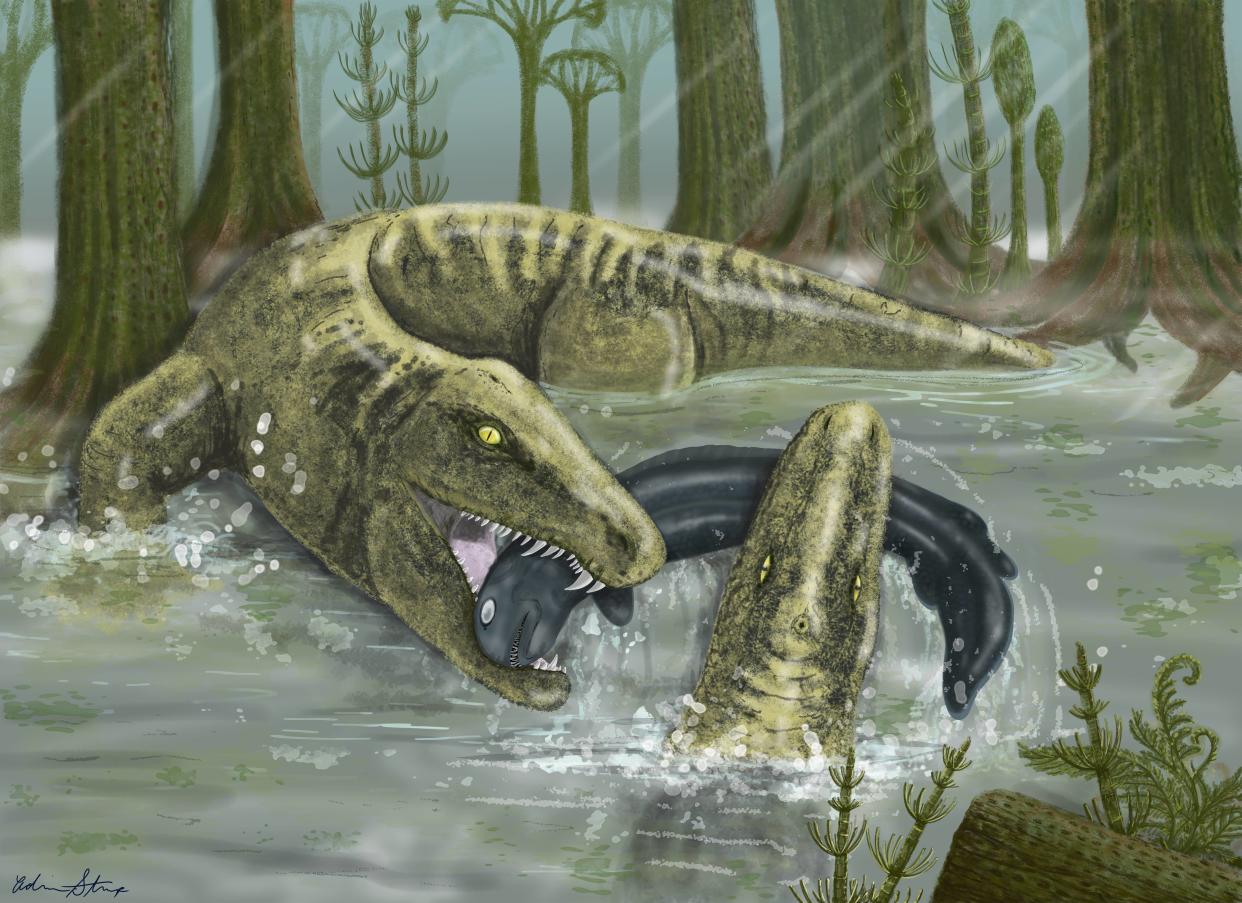This crocodile-like predator roamed Iowa's waters more than 300 million years ago

Scientists are painting a clearer picture of an ancient crocodile-like predator that roamed Iowa 328 million years ago, millions of years before the dinosaurs.
The Whatcheeria was an archaic tetrapod (a four-legged animal) that inhabited the swampy waters of what is today Iowa during the Carboniferous Period, when the area was subtropical and looked more like South Florida than the Midwest we know today, said Ben Otoo, a researcher at the University of Chicago’s Coates Lab, which studies the evolution of early vertebrates.
Otoo and his colleagues at the University of Chicago published a paper Monday in the peer-reviewed Communications Biology Journal that uncovered the aquatic animal's rapid rate of growth early in its life, giving it a quick edge over other species in its aquatic environment.
“Especially in an aquatic context, if you’re a vertebrate, one of the best ways to avoid getting preyed on is to get bigger,” Otoo told USA TODAY. “Because the bigger you are, the fewer things that can eat you easily.”
The collection of Whatcheeria fossils is extensive. Hundreds of specimens of different sizes are kept at the Field Museum in Chicago. They come mostly from one defunct limestone quarry near the town the species is named after – What Cheer, Iowa – where its fossils were first discovered, according to a news release about the study. Whatcheeria was first identified as its own species in 1995.
“Usually we’re working with parts of a single individual,” Otoo said. “So to have enough where I can go into the collections and pull out at least one representative of pretty much of this animal’s body is nuts.”
A batfish and a blind eel: Deep sea creatures discovered by researchers in remote ocean
New to Earth: Two minerals, never-before-seen on Earth, found in one of planet's largest known meteorites
That allowed the research team to chart the Whatcheeria’s size over its life span. The Whatcheeria’s rapid juvenile growth came as a surprise to the team, Otoo said.
They had expected to see a slower growth pattern, more in line with amphibians, according to the news release.
“Basically, we thought that was a trait that was more advanced, later in time,” Otoo said. That growth pattern is associated with more modern egg-laying tetrapods like birds and mammals, which were more terrestrial.
Some specimens indicated the animal grew to as large as 6 feet, 6 inches, and ate fish, Otoo said.
Apart from the creature having large ripping teeth, another recent study by researchers at the University of Bristol in the United Kingdom that reconstructed a Whatcheeria's skull found its snout could resist twisting and bending.
“So these seem like adaptations that would’ve allowed Whatcheeria, in combination with its really big maximum size, to take larger, more resistant prey items,” Otoo said.
Ultimately, the Whatcheeria is an indicator that early tetrapods led varied lives and were more anatomically diverse than expected, Otoo said. “These animals weren’t necessarily constrained in a way that we historically thought.”
This article originally appeared on USA TODAY: Whatcheeria, Iowa's ancient predator, grew fast young, study says

 Yahoo Movies
Yahoo Movies 
